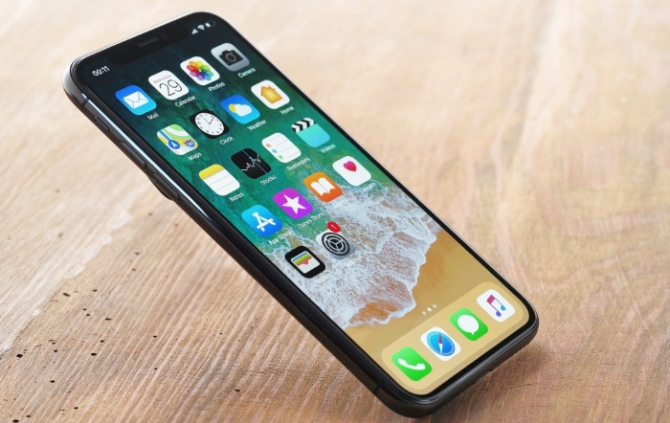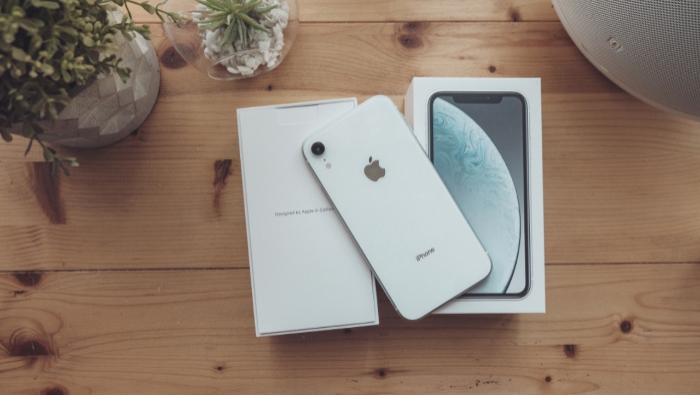iPhone X vs. XR: Clash of the Apple Giants

Choosing between Apple’s iPhone X and iPhone XR can feel like a high-stakes game of spot the difference. At first glance, they seem strikingly similar, both flaunting the sleek design and advanced features typical of Apple’s engineering.
Yet, dive a bit deeper, and subtle yet significant variations emerge.
Design and Build Quality
When choosing a smartphone, its design and build quality are often as important as its technical specifications. The iPhone X and XR, while sharing the Apple lineage, offer distinct experiences in their design and construction.
Let’s take a closer look at how these two models compare in their aesthetics and build.
iPhone X: A Premium Feel
The iPhone X marked a significant shift in Apple’s design philosophy, introducing a stainless steel frame combined with a glass back. This choice of materials not only gives it a premium feel but also enables wireless charging.
The front is dominated by a 5.8-inch OLED display, stretching almost to the edges of the phone, a design choice that was revolutionary at the time of its release. The iPhone X’s aesthetic is further enhanced by its variety of colors, though more limited than its XR counterpart, providing a sophisticated and elegant look.
iPhone XR: Colorful and Robust
In contrast, the iPhone XR takes a slightly different path. It opts for an aluminum frame, which, while not as premium as the stainless steel of the X, offers a more durable and lightweight feel.
The back is also glass, allowing for wireless charging. One of the most noticeable differences is the array of colors the XR comes in, catering to a broader range of personal styles.
The iPhone XR features a larger 6.1-inch display, but it uses LCD technology, which impacts the overall feel and look of the device compared to the OLED screen of the iPhone X. Despite this, the XR’s design is robust, modern, and stands out in its vibrancy.
Display Technology
The display is a crucial component of any smartphone, directly impacting the user experience. iPhone X and XR, while both products of Apple’s innovation, employ different display technologies that affect how we view content, play games, or even interact with our apps.
Understanding these differences is key to determining which phone aligns best with your needs.
iPhone X: OLED Display
The iPhone X boasts an OLED (Organic Light Emitting Diode) display, a technology known for its high contrast ratio and deep blacks. The 5.8-inch screen offers a resolution of 2436 x 1125 pixels, resulting in a crisp and detailed viewing experience.
One of the standout features of OLED technology is its ability to turn off individual pixels, which means true blacks are displayed by simply not lighting these pixels. This not only enhances visual contrast but also contributes to energy efficiency, as unlit pixels consume no power.
Colors on the iPhone X’s display appear vibrant and true-to-life, making it a great choice for those who prioritize display quality in their smartphone experience.
iPhone XR: LCD Technology
The iPhone XR, on the other hand, features a Liquid Crystal Display (LCD) screen, measuring 6.1 inches with a resolution of 1792 x 828 pixels. While this resolution is lower than that of the iPhone X, the XR still delivers a clear and bright display.
LCDs are known for their reliability and consistency in color reproduction across the screen. However, they cannot achieve the same deep blacks as OLED displays, as LCDs use a backlight that illuminates all pixels, regardless of what’s being displayed.
This results in slightly less contrast and can affect the perceived sharpness of the image. Nevertheless, the iPhone XR’s display is more than adequate for everyday use, offering a colorful and bright visual experience.
Performance and Hardware
Performance and hardware are the backbone of any smartphone, determining everything from how smoothly it runs apps to how long the battery lasts. The iPhone X and XR, although released closely in time, have some notable differences in their hardware configurations, affecting their overall performance.
iPhone X: Advanced Hardware
The iPhone X is powered by Apple’s A11 Bionic chip, a processor that was state-of-the-art at the time of the phone’s release. This chip, combined with 3GB of RAM, enables the iPhone X to handle multitasking and high-demand applications with ease. It comes in two storage options: 64GB and 256GB, providing ample space for apps, photos, and other media.
In terms of battery life, the iPhone X has a 2,716mAh battery, which supports wireless charging and offers up to 21 hours of talk time. The hardware of the iPhone X ensures a smooth, responsive experience, whether you’re playing graphics-intensive games or juggling multiple apps.
iPhone XR: Efficient and Capable
The iPhone XR steps up the game with the A12 Bionic chip, which is more efficient and powerful than the A11. This upgrade, along with the same 3GB of RAM as the iPhone X, means the XR can handle more demanding tasks and is more future-proof.
The XR also offers a wider range of storage options, with 64GB, 128GB, and 256GB available, catering to different user needs. Battery performance is one area where the iPhone XR shines, boasting a larger 2,942mAh battery.
This translates to up to 25 hours of talk time, outperforming the iPhone X. Additionally, the XR supports wireless charging and fast charging, making it a robust choice for users who prioritize battery life and performance efficiency.
Camera Capabilities

The camera is often a deciding factor when choosing a smartphone. The iPhone X and XR, while part of the same family, offer different camera experiences.
Both models are designed to capture high-quality images, but they do so with varying hardware and features.
iPhone X: Dual Camera Advantage
The iPhone X features a dual-camera setup on the rear, consisting of a 12-megapixel wide-angle lens and a 12-megapixel telephoto lens. This combination allows for 2x optical zoom and better depth-of-field effects, like the popular Portrait Mode, which blurs the background while keeping the subject in sharp focus.
The telephoto lens also aids in low-light photography, capturing more detail and less noise. The front camera, a 7-megapixel TrueDepth camera, supports advanced features like Face ID and Animoji.
The TrueDepth system enables Portrait Mode selfies, adding a professional touch to your front-camera shots.
iPhone XR: Single Lens with Smart Features
The iPhone XR, while only having a single 12-megapixel wide-angle rear camera, does not fall short in delivering quality photos. Thanks to Apple’s software prowess, the XR can still produce Portrait Mode photos using smart algorithms to create depth-of-field effects.
Although it lacks the 2x optical zoom, the XR’s camera excels in Smart HDR, balancing light and dark elements in photos more effectively. The front camera is identical to that of the iPhone X, with the same 7-megapixel TrueDepth camera offering similar features, including Portrait Mode selfies and Face ID.
Software and Ecosystem
The software experience and ecosystem integration are vital aspects of any smartphone, influencing how we interact with our devices and access various services. The iPhone X and XR, though close in their release timeline, have some differences in their software capabilities and ecosystem support.
iPhone X: Early Adoption of iOS Innovations
The iPhone X initially came with iOS 11.1.1 and has received updates up to iOS 16.6.1. This progression through multiple versions of iOS means the iPhone X has been at the forefront of Apple’s software innovations, including improvements in privacy, app functionality, and user interface enhancements.
The seamless integration with Apple’s ecosystem, including iCloud, Apple Music, and various accessories like AirPods and Apple Watch, remains a key feature. The introduction of features like Face ID, Animoji, and augmented reality capabilities on the iPhone X set a new standard for Apple’s approach to software and device interaction.
iPhone XR: Continuous Software Evolution
The iPhone XR launched with iOS 12 and is upgradable to the latest iOS 17.1.1, ensuring it stays up-to-date with the newest features and security updates. This includes newer software capabilities that were not initially available on the iPhone X, such as enhanced performance optimizations and additional Animoji and Memoji options.
The XR also benefits from Apple’s ecosystem, offering smooth integration with services and accessories. Additionally, the XR’s hardware is tailored to better leverage the enhancements in newer iOS versions, potentially offering a more refined user experience over time.
User Experience and Target Audience
Understanding the user experience and identifying the target audience are key factors in choosing the right smartphone. The iPhone X and XR, while similar in many respects, cater to slightly different user preferences and needs.
iPhone X: Catering to Tech Enthusiasts and Power Users
The iPhone X is designed for users who prioritize advanced technology and premium features. With its high-resolution OLED display, sophisticated dual-camera system, and stainless-steel build, it appeals to tech enthusiasts who seek the latest innovations.
The iPhone X is also well-suited for power users who demand a high-performing device for tasks like mobile gaming, photography, and multimedia consumption. Its cutting-edge Face ID technology and sleek design make it a top choice for those who want a blend of style and functionality.
The iPhone X targets users who are willing to invest in a higher-end device for a superior experience.
iPhone XR: Ideal for Everyday Users Seeking Value
The iPhone XR, with its colorful design and efficient performance, is tailored for everyday users who want a balance between quality and value. Its larger yet robust LCD screen, single-lens camera with smart features, and longer battery life make it a practical choice for regular use.
The iPhone XR is perfect for those who appreciate the Apple ecosystem but don’t necessarily need the very top-tier features. It’s also an attractive option for users who prefer a wider range of color options to match their personal style.
The iPhone XR is aimed at users looking for a reliable, high-quality Apple device without the premium price tag of the more advanced models.
Conclusion
Choosing between the iPhone X and XR hinges on individual preferences and needs. Both models showcase Apple’s commitment to quality and innovation, yet they cater to different user groups.
The iPhone X, with its OLED display, dual-camera system, and premium build, is a fit for those who seek the latest technological advancements and don’t mind the higher price. On the other hand, the iPhone XR offers a robust and colorful design, a single-lens camera that punches above its weight, and a longer battery life, making it an excellent choice for everyday users who value functionality and efficiency.
Your decision should consider what aspects of a smartphone are most important to you. If top-tier features and a high-end feel are your priorities, the iPhone X is a compelling choice.
But if you’re looking for a reliable, high-quality device that offers great value, the iPhone XR is a strong contender. Both phones, with their respective strengths, are testament to Apple’s ability to cater to a wide range of preferences, ensuring that whichever model you choose, you’ll be getting a device that’s not just a phone, but a gateway to a comprehensive digital experience.


